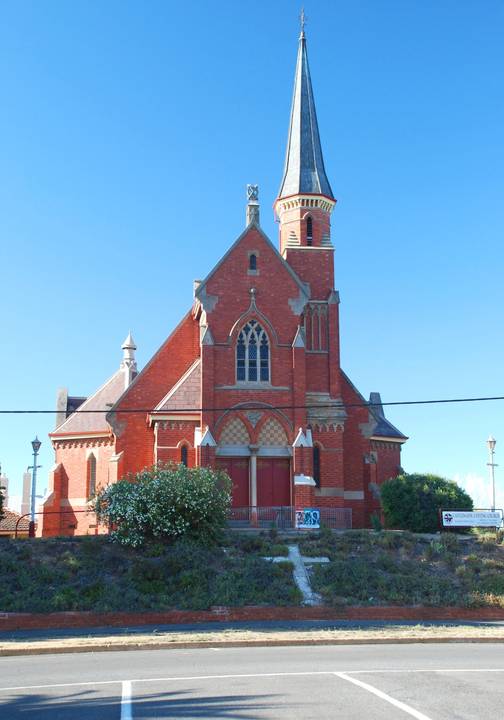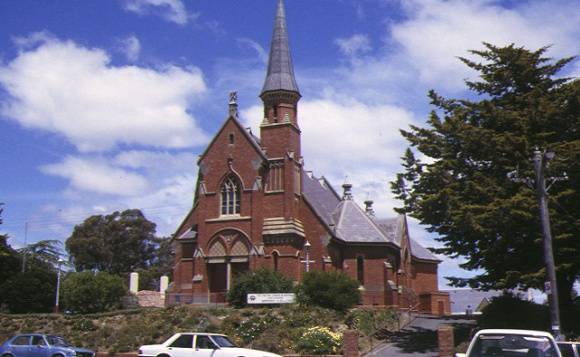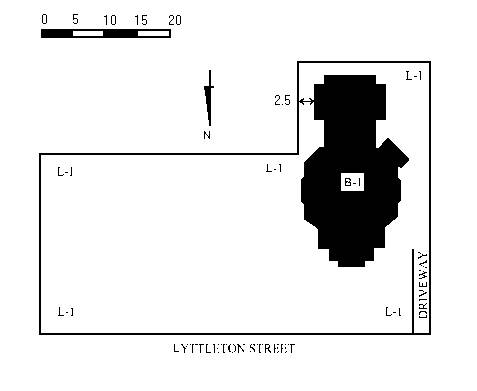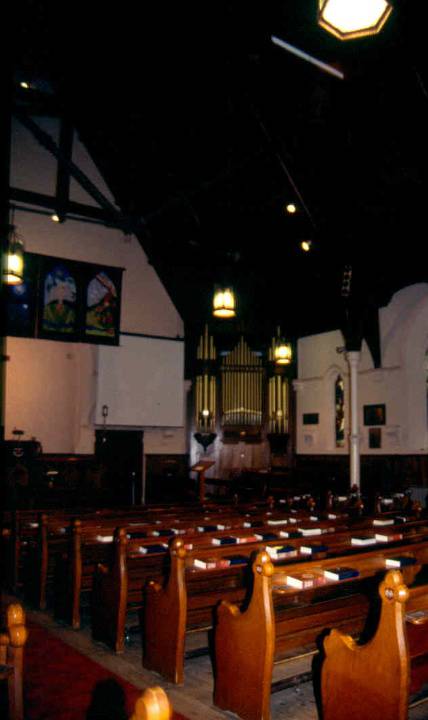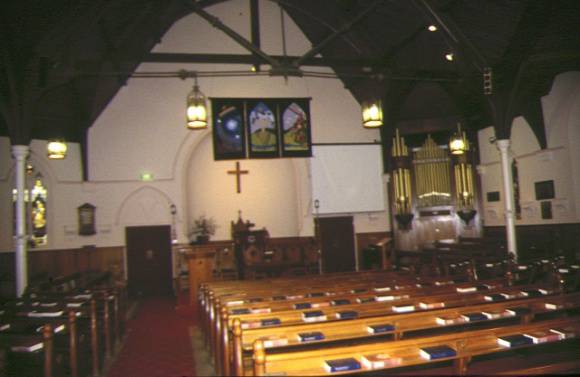| Back to search results » | Back to search page » |
|
UNITING CHURCH
Location4-8 LYTTLETON STREET CASTLEMAINE, MOUNT ALEXANDER SHIRE
File Number602328LevelRegistered |
|
Statement of Significance
The foundation stone for the Uniting Church, Castlemaine was laid by
the Premier of Victoria, Sir James Patterson on June 22nd 1894 and the
building was officially opened on 16th December 1894. The church was
built as a Presbyterian Church by Mr Shillabeer to a design by the
Ballarat architect Charles Figgis. It is a red brick building with
cement dressings and a Welsh slate roof. Picturesquely planned with an
asymmetrical front facade, it is situated on one of Castlemaine's
highest points. The assembling room behind the vestries was built in
1990. Stained glass from the former Wesleyan Methodist church in
Castlemaine was relocated in this area, including a window depicting a
local preacher on the Forest Creek goldfields during the 1850s which
had been originally installed in 1935. The Uniting Church is of architectural, historical and aesthetic
significance to the state of Victoria. The Uniting Church is aesthetically important for the decorative
detail of its exterior and interior. Significant elements include the
tympanum over the central doorway featuring decorative tilework and a
centre panel with the Presbyterian symbol of the burning bush; the
front gable with its ogee label mould and two-mullioned window of
Early English tracery, surmounted by a St Andrew's Cross in cement;
and the tower terminating in a copper, octagonal broached spire.
Significant interior features include the angled transepts with their
hexagonal hipped roofs, designed to accommodate the amphitheatre-like
seating; and the kauri and oregon timberwork, including the dado
boards, the pulpit, the pews and the hammerbeam trusses of the ceiling
alternately constructed of timber and timber and iron. The church is architecturally significant as an example of a
remarkably eclectic design by the architect Charles Figgis. It
illustrates the eclectic architectural philosophies of the mid to late
1890s. It draws on a range of influences: the tympanum over the
central doorway with the decorative tilework is derived from French
Romanesque sources, the tower is more French Gothic in influence,
while the massing and roof form are more Italian Gothic in style. However, it is the combination of these elements that make this
church an important example of its time. It also represents a move
away from the earlier formal church architecture towards a more
romantic or picturesque style. The Uniting Church, Castlemaine is historically important as a rare
example of church architecture from the mid to late 1890s when church
building went through a period of decline.
Group
Religion
Category
Church


